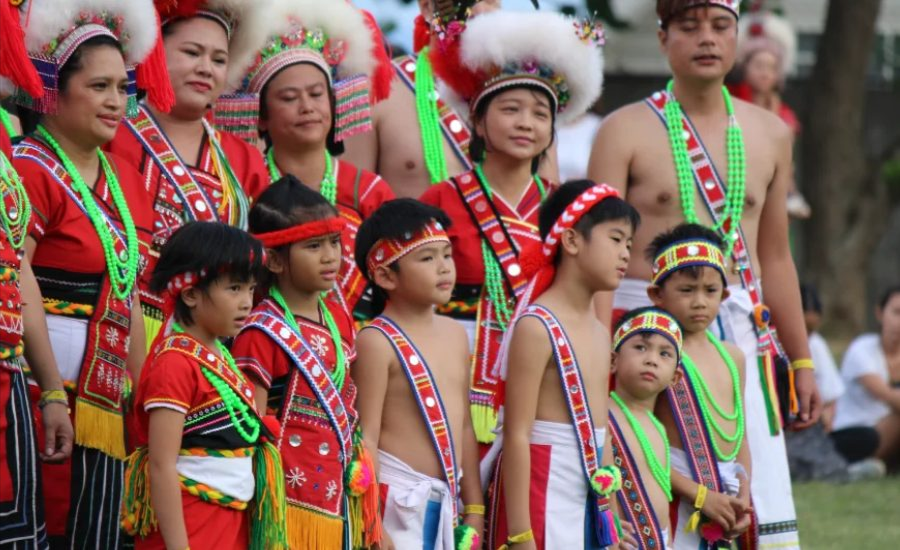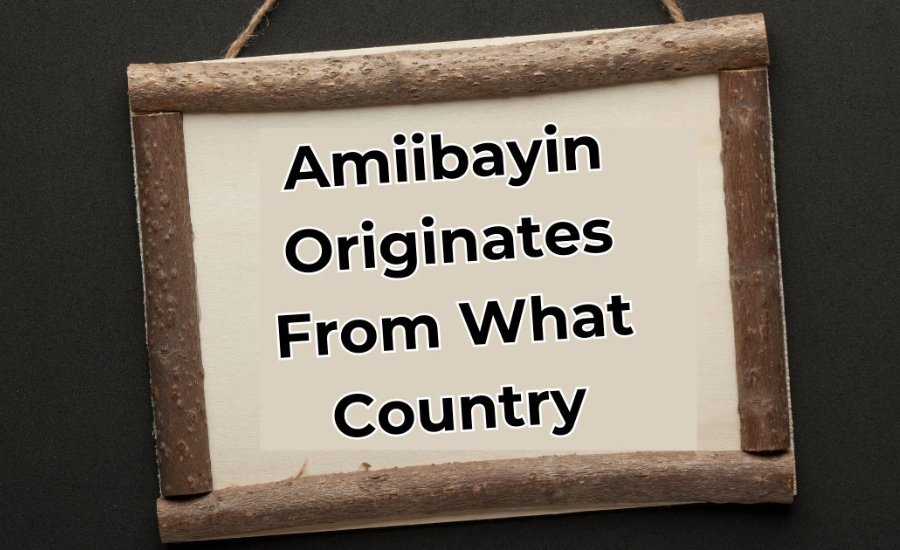amiibayin originates from what country is a fascinating tradition that highlights the rich cultural diversity found around the world. While many may not be familiar with the term, it holds profound significance, reflecting the unique history and values of the communities that embrace it.
Identifying the country of origin for Amiibayin provides valuable context for understanding its historical roots and offers insights into the beliefs and lifestyles of its practitioners. By delving into this tradition, we uncover the intricate social dynamics that contribute to the identities of people globally. This article will examine the country from which Amiibayin emerges and explore its cultural relevance in greater detail.
The exploration of Amiibayin not only enhances our appreciation for this particular tradition but also fosters a broader understanding of the diverse cultural practices that enrich our world.
Unraveling the Significance of amiibayin originates from what country

To grasp the essence of Amiibayin, it is essential to acknowledge that names and terms often embody deep social significance, intricately linked to the history and identity of their cultures. While comprehensive information about Amiibayin may not be readily available, examining its origins reveals a rich tapestry of linguistic, geographical, and cultural influences.
Terms like Amiibayin often have roots in ancient languages or are tied to specific cultural traditions. Though not commonly featured in mainstream conversations, such terminology reflects the heritage of cultural or tribal communities that strive to preserve their unique identities through language. By exploring these terms, we gain invaluable insights into the diverse legacies and values upheld by those who cherish these customs, enriching our understanding of their cultural landscapes.
The Evolution of Amiibayin in Modern Society
As we explore the origins of Amiibayin, it’s essential to recognize how this tradition has adapted within contemporary society. Like many cultural practices around the globe, Amiibayin has been shaped by forces such as globalization, modernization, and urbanization.
In urban regions of the Philippines, the practice of Amiibayin has become less common, with many young individuals gravitating toward modern lifestyles that often overlook traditional customs. Conversely, in rural communities, the tradition remains vibrant, as locals actively participate in Amiibayin to maintain their cultural heritage.
This revitalization is part of a larger movement focused on preserving and promoting Filipino culture, highlighting the significance of Amiibayin as a symbol of the nation’s rich historical narrative.
Filipino artists, scholars, and cultural advocates are increasingly incorporating aspects of Amiibayin into contemporary art forms such as theater, music, and visual arts. This fusion of traditional and modern creative practices has allowed Amiibayin to retain its relevance in a rapidly changing world, showcasing the resilience and adaptability of Filipino cultural identity.
Amiibay: The Ultimate Marketplace for Gamers and Collectors
Amiibay serves as a specialized online marketplace designed specifically for gamers and collectors, particularly those passionate about amiibo figures. This platform offers a streamlined space for users to buy, sell, or trade their amiibo collectibles, catering to a lively community of fans who celebrate Nintendo’s iconic figurines.
Users can easily navigate the website, creating personalized profiles that highlight their listings and facilitate interactions with potential buyers or sellers. The intuitive interface not only simplifies the transaction process but also encourages connections among fans from around the globe.
What truly sets Amiibay apart is its commitment to fostering amiibo culture, evolving it from a mere trading platform into a vibrant community hub for discussions, tips, and advice related to amiibo collecting. Many users appreciate this engaging environment, as it allows them to not only expand their collections but also forge connections with fellow enthusiasts who share their passion.
The Historical Roots of Amiibayin in the Philippines
To understand the importance of Amiibayin, it’s essential to examine the historical context of the Philippines. The country’s rich cultural tapestry has been shaped by a fusion of indigenous traditions, interactions with Asian traders, and the influences of European colonizers, resulting in a vibrant and multifaceted heritage.
Prior to colonization, indigenous communities in the Philippines engaged in various rituals and communal gatherings to honor their deities, ancestors, and the natural world. These early practices established the foundations for Amiibayin, fostering community bonds and reinforcing social connections.
The arrival of Spanish colonizers in the 16th century brought profound changes to the cultural landscape of the Philippines. Although many indigenous practices were suppressed or transformed under colonial rule, Amiibayin persisted in certain areas, especially in remote regions where traditional customs remained intact. This endurance reflects the resilience and vitality of cultural identity among these communities, highlighting the ongoing significance of Amiibayin within their social fabric.
The Cultural Tapestry of Amiibay

Amiibay represents a fascinating blend of cultural influences that shape its unique identity. Emerging from gaming culture, this platform incorporates diverse traditions and practices from around the world, enriching the experience for its users.
The origins of amiibo figures can be traced back to Japan, where they first gained popularity. Here, a captivating combination of anime aesthetics and traditional craftsmanship creates distinctive collectibles that resonate with a wide audience, celebrating both artistic expression and popular culture.
In contrast, Western interpretations often prioritize functionality over artistry. Gamers in these regions may focus more on gameplay enhancements than the collectible aspect of the figures, reflecting a different set of cultural values.
These cultural variations extend to regional events as well. For instance, gatherings in Europe may emphasize community exchanges, while North American events often spotlight competitive gaming.
Language also plays a vital role in enriching the Amiibay experience, as localized versions cater to diverse markets and enhance user engagement across the globe. Each interaction within this vibrant community showcases cultural nuances that influence preferences and trends, highlighting the dynamic exchange of global influences on the platform. By examining these cultural dimensions, we gain a deeper understanding of the origins of Amiibayin and its evolution into a globally recognized phenomenon.
The Religious Influence on Amiibayin
To fully understand the roots of Amiibayin, it’s important to recognize the significant impact of religion in the Philippines. Predominantly a Catholic nation due to centuries of Spanish colonization, the country also boasts a rich tapestry of indigenous spiritual beliefs that have deeply influenced practices like Amiibayin.
While Amiibayin is often associated with indigenous spiritual traditions, it has gradually absorbed elements of Christianity, creating a captivating blend of ancient and contemporary spiritual practices. In different regions, Amiibayin customs may emphasize invoking nature deities or honoring ancestral spirits, whereas in other contexts, Catholic saints and religious celebrations may take precedence.
This religious syncretism highlights the resilience of Filipino culture and its capacity to adapt and evolve. Despite the strong presence of Western religious practices, traditions like Amiibayin have preserved their core essence, serving as a testament to the country’s indigenous heritage and the enduring richness of its cultural legacy.
The Cultural Significance of Names in Amiibayin
When exploring the origins of Amiibayin, it’s essential to appreciate the social significance of unique names and their transmission through generations. In many cultures, names serve as more than simple identifiers; they encapsulate familial ties, ancestral heritage, and the values that parents hope to impart to their children. Thus, Amiibayin may symbolize more than just a term; it can embody profound meanings related to tradition, community, or spirituality.
In various African cultures, for example, names often carry deep spiritual connotations. They may be selected to reflect pivotal events surrounding a child’s birth or to pay homage to ancestral figures. Similarly, in Southeast Asia, names frequently draw their significance from positive associations linked to nature, family lineage, or prophetic elements.
Delving into the roots of Amiibayin offers more than mere geographical insights; it provides a richer understanding of the values and beliefs cherished by those who embrace this term. This exploration reveals how deeply intertwined identity and culture are within communities, showcasing the lasting impact of naming traditions on social cohesion and cultural continuity.
Exploring the Varied Landscape of Amiibay
Amiibay showcases a diverse array of forms, each bringing its own advantages and challenges. Many users find value in the vibrant communities that emerge from specific regional variations, as connecting with local players can greatly enhance the trading experience and create a more personalized environment.
However, when examining the origins of Amiibayin, it becomes apparent that not all versions are equally accessible. Different countries often implement unique regulations and guidelines, which can be frustrating for newcomers. This inconsistency can lead to confusion among traders, making it difficult to navigate the platform effectively.
Accessibility is another critical factor that influences user experience. Certain iterations of Amiibay may cater more effectively to specific language and platform preferences. Unfortunately, this can alienate non-native speakers who encounter communication barriers, limiting their ability to engage fully with the community.
On a positive note, limited edition releases in particular regions spark excitement among collectors. However, the scarcity of these items often results in inflated prices and heightened competition among fans eager to acquire these rare collectibles. While each version of Amiibay has its unique charm, it also presents challenges that users must carefully navigate. Understanding the origins of Amiibayin can shed light on these variations and enhance the overall experience for users.
Unpacking the Linguistic Significance of Amiibayin
To truly appreciate the significance of amiibayin, it’s essential to delve into its linguistic elements. This term is more than just a word; it weaves together a rich tapestry of meanings and cultural connections.
In many cultures, language is imbued with profound significance, reflecting societal values and collective beliefs. By exploring the origins of amiibayin, we can gain insight into how language influences identity and cultural heritage. Understanding the question, “From which country does amiibayin originate?” allows us to uncover the deeper narratives embedded within this term and its relevance to the communities that cherish it.
Cultural Resonance of Amiibayin

The cultural importance of amiibayin goes well beyond its linguistic meaning; it deeply connects to the identity of those who embrace it. In communities where amiibayin is prevalent, the term often symbolizes belonging and togetherness.
It encapsulates the customs, values, and shared experiences that unite individuals, fostering a sense of community and cultural continuity. By acknowledging this connection, we can appreciate how amiibayin serves as a vital link to the collective heritage and identity of its users.
Final Words
Amiibayin originates from the Philippines, where it embodies a rich tapestry of cultural traditions and practices. This term is not merely a label but signifies a deep connection to the community’s history, values, and identity. Rooted in both indigenous customs and the influences of Spanish colonization, amiibayin reflects the diverse heritage of the Filipino people. As a living tradition, it resonates with a sense of belonging and continuity among its practitioners. Understanding its origins sheds light on the intricate social dynamics that define Filipino culture. By exploring the phrase “amiibayin originates from what country,” we uncover the significance of language and tradition in shaping identities. This exploration enhances our appreciation for the vibrant cultural practices that contribute to a shared sense of community, reminding us of the enduring legacy of amiibayin and its role in the lives of those who cherish it.
